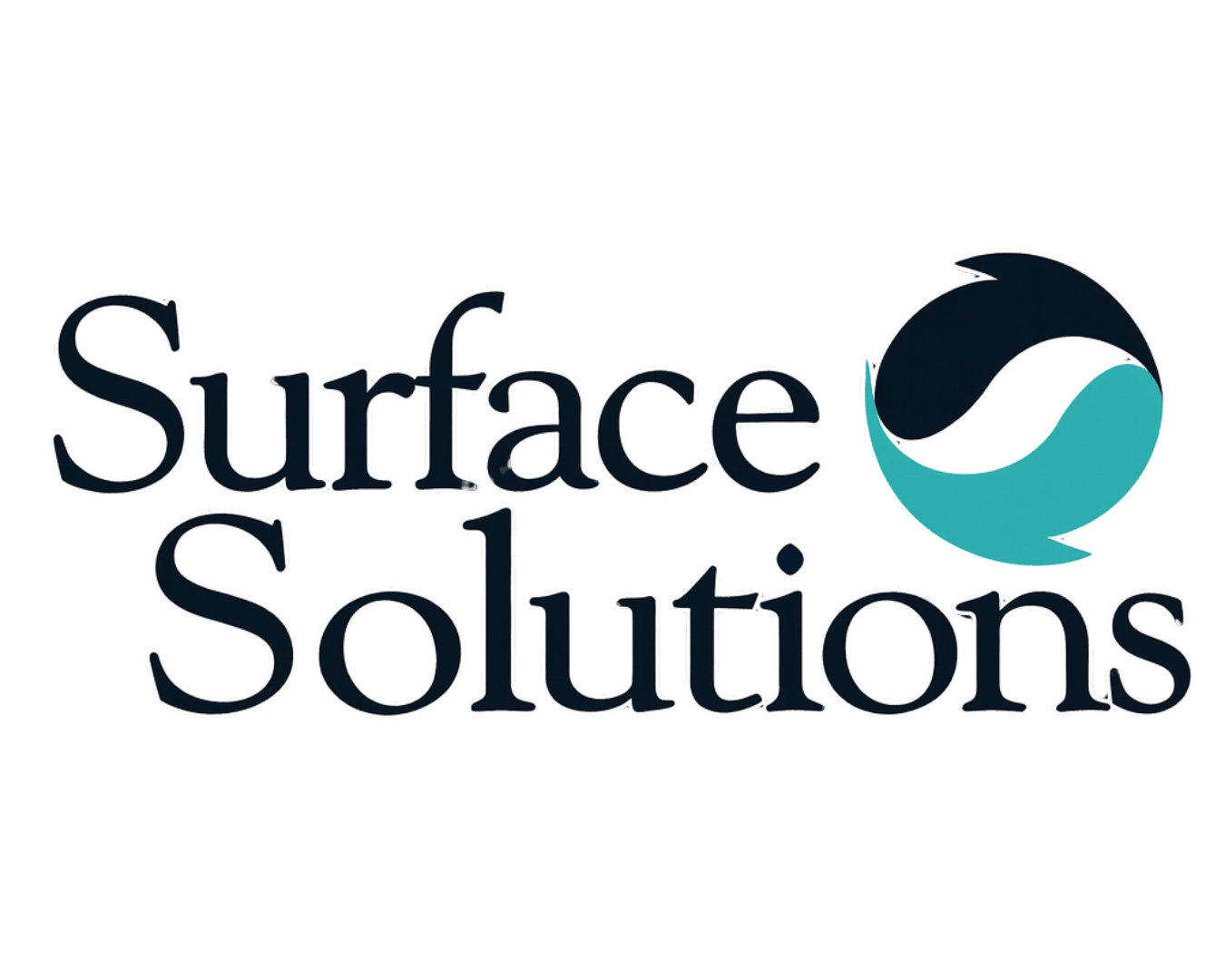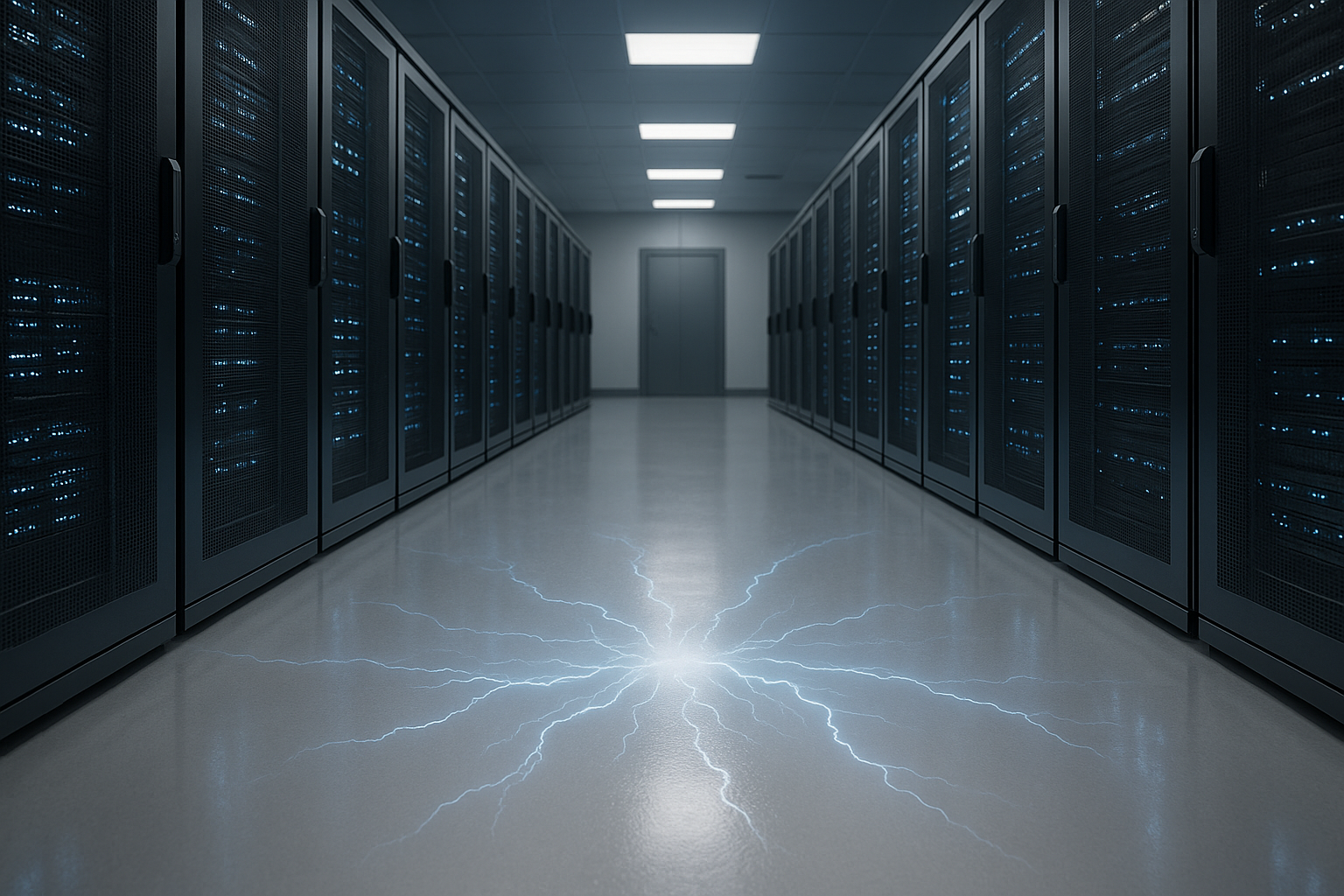What Is ESD and Why Does It Matter?
Electrostatic discharge happens when there’s a sudden flow of electricity between two electrically charged objects. In everyday life, it’s a minor inconvenience — but in a controlled environment, ESD can lead to:
- Damaged electronics in assembly lines or cleanrooms
- Server outages in data centers
- Fire risk when flammable materials are present
- Compromised lab results in healthcare or pharmaceutical research
The cost of a single ESD event can range from a few hundred dollars (for a fried circuit board) to millions of dollars in lost productivity or data loss.
How Flooring Plays a Role in ESD Control
People and equipment generate static as they move around. Without proper grounding, that static builds until it discharges — usually through the path of least resistance (often expensive equipment).
Conductive flooring systems work by:
- Allowing controlled dissipation of static charge
- Creating a continuous conductive path to ground
- Preventing dangerous build-up in sensitive areas
This isn’t just a luxury — it’s an industry requirement for many applications.
ESD Flooring Options: Epoxy vs. Polished Concrete
Both epoxy and polished concrete can be engineered for ESD resistance. Here’s how they compare:
ESD Epoxy Systems
- Consistent Conductivity: Resinous flooring with conductive fillers and copper grounding strips ensures uniform performance
- Customizable Colors & Finishes: Ideal for cleanrooms or branding-sensitive spaces
- Seamless Surface: No grout lines or seams where static can build
- Durability: Withstands forklifts, carts, and chemical cleaning
ESD-Enhanced Polished Concrete
- Lower Material Footprint: Uses existing slab, treated with conductive densifiers and sealers
- Long-Term Performance: Minimal maintenance and highly sustainable
- Modern Aesthetic: Perfect for tech campuses or lab environments seeking a clean look
- Lower Lifecycle Costs: Extremely long-lasting with little upkeep
Standards and Compliance
When designing an ESD flooring system, compliance is key.
ANSI/ESD S20.20 is the most widely recognized standard, covering everything from personnel grounding to flooring materials. At Surface Solutions, we help clients select systems that meet:
- ANSI/ESD standards
- IEC 61340 requirements (global)
- Healthcare regulations for sensitive environments
Applications for ESD Flooring
- Data Centers & Server Rooms: Protect servers and prevent costly downtime
- Electronics Manufacturing: Avoid damage to circuit boards and components
- Labs & Cleanrooms: Maintain stable testing environments
- Operating Rooms: Prevent static that could interfere with sensitive equipment
- Aerospace & Defense: Protect sensitive avionics and mission-critical hardware
Long-Term Benefits of ESD-Resistant Floors
- Reduced Equipment Loss: Prevent costly replacements
- Lower Downtime: Avoid production halts and service interruptions
- Better Compliance: Meet industry safety requirements
- Safer Work Environment: Reduce fire and shock risks for staff
- Stronger ESG Story: Sustainable, compliant facilities attract partners and clients
Surface Solutions’ Approach
We don’t believe in one-size-fits-all. Our team:
- Assesses your environment – traffic, equipment, static sources
- Recommends the right system – epoxy, polished concrete, or hybrid
- Installs with precision – grounding strips, copper tape, and conductive layers
- Tests for compliance – ensure your floor performs before handoff
Ready to Ground Your Facility — Safely?
Call 877-CSTM-FLR
Email carolina@cstmflr.comVisit www.cstmflr.com
Don’t wait for static to cause a costly disaster. Get a flooring system that keeps your people, equipment, and data safe.


.png)
